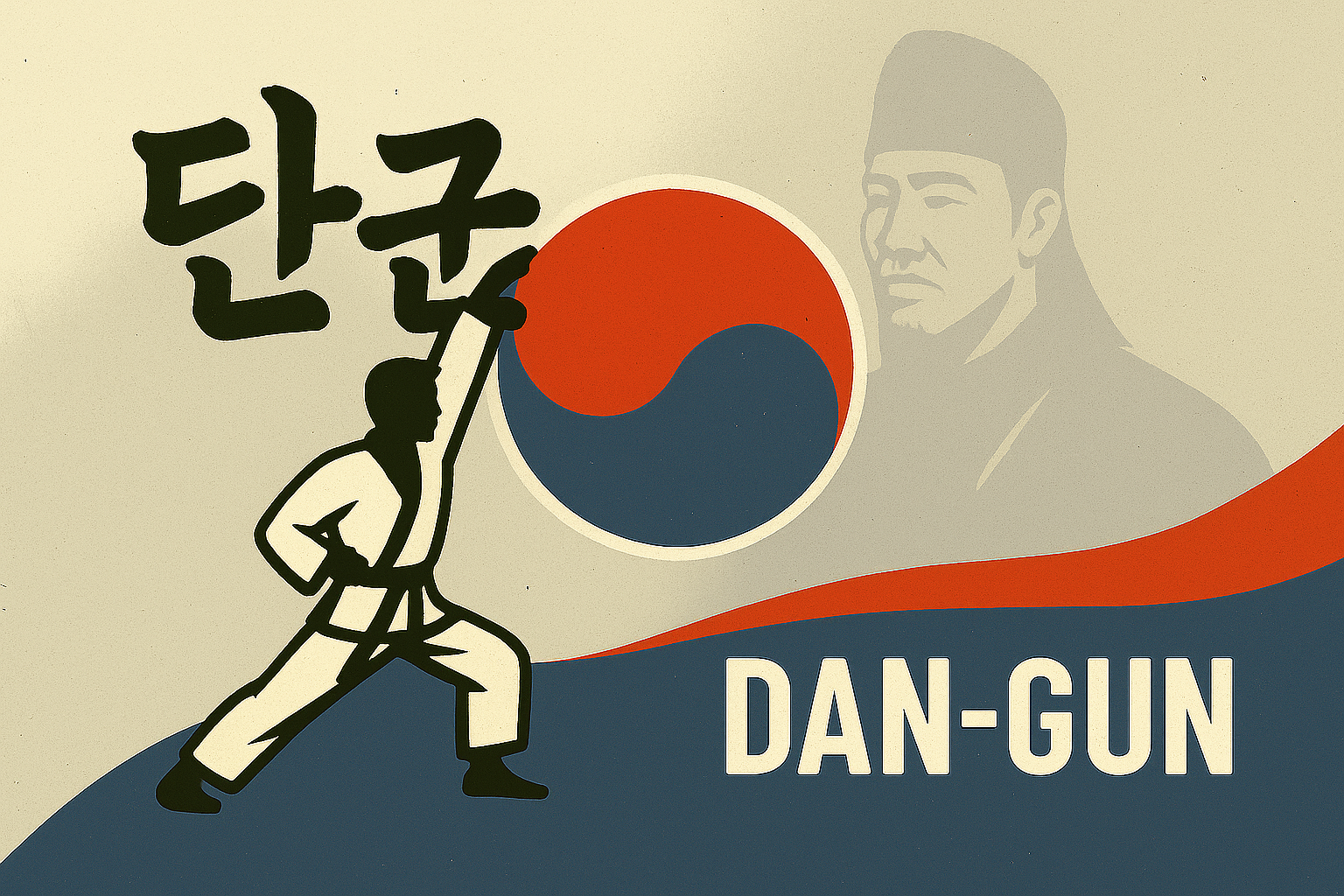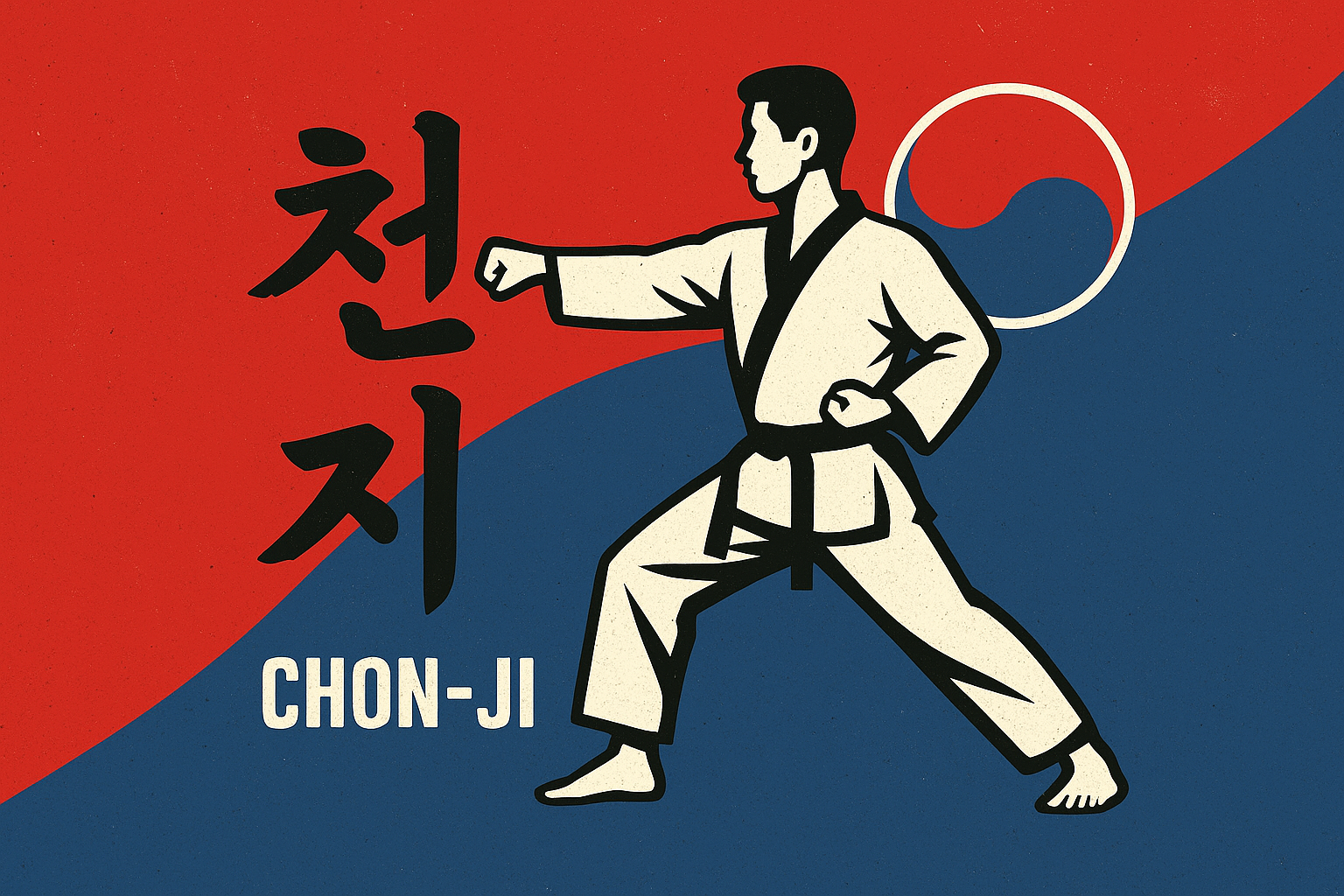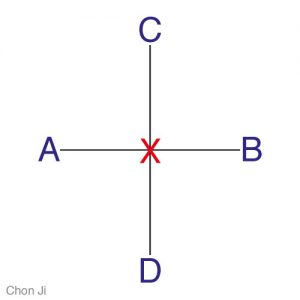Pattern Dan-Gun
Pattern Dan-Gun – The Next Step After Chon-Ji
If Chon-Ji represents the birth of the universe – the beginning of your martial arts journey – then Pattern Dan-Gun is your first real climb upward.
You’ve learned to stand, block, and punch with balance. Now, Dan-Gun asks something more:
intention.
It’s about lifting your techniques, your focus, and your mindset beyond the basics.
The Meaning Behind Pattern Dan-Gun
Dan-Gun (단군) is named after the legendary founder of Korea, Dan-Gun Wanggeom, who, according to Korean mythology, established the first Korean kingdom in 2333 B.C.
So, when you perform this pattern, you’re not just doing 21 movements –
you’re honouring the spirit of a nation and the roots of Taekwondo itself.
This isn’t random choreography; it’s history in motion.
Pattern Dan-Gun Overview

- Number of Movements: 21
- Diagram Shape: (see image)
- Stances Used:
– Parallel Ready Stance (Narani Junbe Sogi),
– Walking Stance (Gunnun Sogi),
– L-Stance (Niunja Sogi). - Techniques Introduced:
– Knife Hand Guarding Block (Sonkal Daebi Maki)
– Rising Block (Chookyo Makgi)
– Twin Forearm Block (Sang Palmok Makgi)
– High Punch (Nopunde Jirugi)
– Knifehand Strike (Sonkal Taerigi)
Dan-Gun’s movements are primarily directed upwards, symbolising Dan-Gun ascending to Heaven.
It’s the bridge between earth and sky – from Chon-Ji’s balance to Dan-Gun’s ambition.
How to Approach the Pattern Dan-Gun
By now, you’ve realised Taekwondo isn’t about memorising moves – it’s about understanding why those moves exist.
So here’s how to train this pattern properly:
- Begin in Parallel Ready Stance (Narani Joon-Bi Sogi):
Not “standing there waiting for your turn.”
You’re already in motion internally – calm body, active mind. - L-Stance Knife Hand Guarding Block (Niunja Sogi Sonkal Daebi Makgi):
Protect the Body. Keep shoulders down.
You’ll either make it too square or too flat. Remember: 70/30 weight distribution. - L-Stance Twin Forearm Block (Niunja Sogi Sang Palmok Makgi):
Looks easy. Isn’t.
You’ll either make it too square or too flat. Remember: 70/30 weight distribution. - Knife Hand Strike (Sonkal Taerigi):
It’s not a swat. It’s a cut.
Chamber fully, extend with purpose, and feel the “snap” without tension. - High Punch (Nopunde Jirugi):
The key here isn’t height – it’s alignment. Punch at eye level of your imaginary opponent, not above your own head. - Final Movement:
Don’t collapse at the end.
Finish strong. Stillness is part of the performance.
Common Mistakes in Dan-Gun
❌ Overreaching on the High Blocks – Your arm isn’t a periscope. Keep it above the head, not behind it.
❌ Flat L-Stances – They’re called L for a reason. Check your back foot is 90 degrees to your front.
❌ Punching Too High – “High punch” doesn’t mean “random skyward jab.” Target the opponent’s face level.
❌ Losing Rhythm – Dan-Gun should flow like a conversation – block, counter, breathe. Don’t rush or pause without reason.
Symbolism You Can Feel (Not Just Read)
Chon-Ji taught you about balance – Heaven and Earth.
Dan-Gun adds aspiration. It’s about rising – not arrogantly, but intentionally.
You’ve mastered standing still. Now you learn to rise with control.
You’ve learned to move on flat ground. Now you move with meaning.
Think of Dan-Gun as the first story of your growth – the moment you stop being a beginner who just copies and start becoming a student who understands.
Frequently Asked Questions About Dan-Gun
Q: What grade is required to perform Dan-Gun?
A: Dan-Gun is the second ITF Taekwondo pattern, learned at 8th Kup (Yellow Belt) and required for grading to 7th Kup (Yellow Belt with Green Stripe).
Q: How many movements are in Dan-Gun?
A: There are 21 movements, with techniques directed mostly upward, symbolising Dan-Gun’s rise to Heaven.
Q: What’s the most difficult part of this pattern?
A: The Twin Forearm Block (Sang Palmok Makgi). Many students struggle with the angle, stance width, and chamber position – so take your time with it.
Q: How is Dan-Gun different from Chon-Ji?
A: Chon-Ji focuses on foundational blocks and punches at middle and low levels. Dan-Gun adds high techniques and introduces L-Stances, demanding better control and body alignment.
Final Thought – You’re Not Just Doing Patterns. You’re Building a Legacy.
Every movement in Taekwondo tells a story.
Every stance you hold connects you to those who trained before you.
When you perform Dan-Gun, imagine the lineage behind it – generations of martial artists perfecting the same 21 moves.
Do it with pride.
Do it with precision.
And do it with the same quiet determination that’s carried Taekwondo from ancient Korea to your modern-day dojang.


